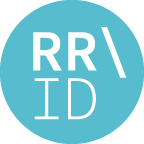Neurologic manifestations associated with COVID-19: a multicentre registry
This article has been Reviewed by the following groups
Listed in
- Evaluated articles (ScreenIT)
- Evaluated articles (Rapid Reviews Infectious Diseases)
Abstract
Article activity feed
-
-

Strength of evidence
Reviewers: Yi Tang (Capital Medical University), Chenjian Li, (Peking University) | 📗📗📗📗◻️
Kapil Gururangan (Icahn School of Medicine at Mount Sinai) | 📗📗📗📗◻️ -

Yi Tang, Chenjian Li
Review 1: "Neurological manifestations associated with COVID-19: a nationwide registry"
Study finds broad spectrum of neurological manifestations associated with SARS-CoV-2 infection. Findings are informative for future intervention studies. Decision-makers should consider the claims in this study actionable with limitations to some methods and data.
-

Kapil Gururangan
Review 2: "Neurological manifestations associated with COVID-19: a nationwide registry"
Study finds broad spectrum of neurological manifestations associated with SARS-CoV-2 infection. Findings are informative for future intervention studies. Decision-makers should consider the claims in this study actionable with limitations to some methods and data.
-

-

SciScore for 10.1101/2020.07.15.20154260: (What is this?)
Please note, not all rigor criteria are appropriate for all manuscripts.
Table 1: Rigor
Institutional Review Board Statement IRB: In accordance with French law, the study complied with the Commission Nationale de l’Informatique et des Libertés (CNIL, reference number 2217844) and ethics committee (reference number RCB 2020-A01300-39) requirements. Randomization not detected. Blinding not detected. Power Analysis not detected. Sex as a biological variable not detected. Table 2: Resources
No key resources detected.
Results from OddPub: We did not detect open data. We also did not detect open code. Researchers are encouraged to share open data when possible (see Nature blog).
Results from LimitationRecognizer: We detected the following sentences addressing limitations in the study:Our study has …
SciScore for 10.1101/2020.07.15.20154260: (What is this?)
Please note, not all rigor criteria are appropriate for all manuscripts.
Table 1: Rigor
Institutional Review Board Statement IRB: In accordance with French law, the study complied with the Commission Nationale de l’Informatique et des Libertés (CNIL, reference number 2217844) and ethics committee (reference number RCB 2020-A01300-39) requirements. Randomization not detected. Blinding not detected. Power Analysis not detected. Sex as a biological variable not detected. Table 2: Resources
No key resources detected.
Results from OddPub: We did not detect open data. We also did not detect open code. Researchers are encouraged to share open data when possible (see Nature blog).
Results from LimitationRecognizer: We detected the following sentences addressing limitations in the study:Our study has some limitations. First, this is a retrospective registry with inherent reporting biases, which should lead us to interpret with caution the different proportions of neurological manifestations. Headache, dizziness and anosmia were not particularly frequent in our registry, probably underreported and/or associated with milder forms of COVID-19 disease. Secondly, the data are entirely descriptive and based on the report at a definite time period during the French outbreak. We used a deliberately simplified CRF given the exceptional working load of medical teams, whose first mission during the outbreak was the management of patients. There was therefore no exhaustive collection of medical history other than neurological comorbidities and vascular comorbidities for AICS, nor of biological parameters. The main objective was to provide a wide overview of neurological manifestations associated with SARS-CoV-2 infection. The analysis of the mechanisms and potential risk factors for nervous system involvement in COVID-19 is therefore limited. Further studies are necessary to clarify these points.
Results from TrialIdentifier: No clinical trial numbers were referenced.
Results from Barzooka: We did not find any issues relating to the usage of bar graphs.
Results from JetFighter: We did not find any issues relating to colormaps.
Results from rtransparent:- Thank you for including a conflict of interest statement. Authors are encouraged to include this statement when submitting to a journal.
- Thank you for including a funding statement. Authors are encouraged to include this statement when submitting to a journal.
- No protocol registration statement was detected.
-


